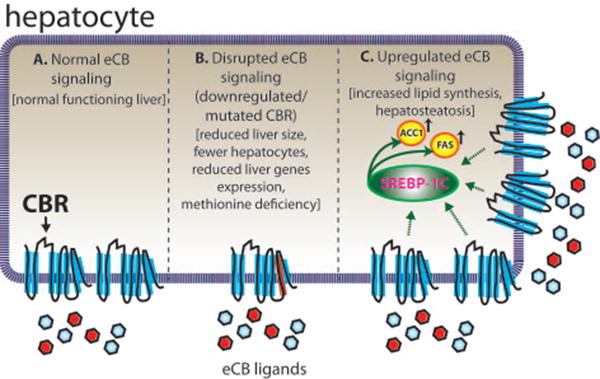Figure 2. The eCBs in Zebrafish Liver.

Proper liver function in zebrafish appears to be dependent on a normal, functioning eCBs. (A) Zebrafish liver functions regularly when eCB signaling is unaltered. (B) Mutation of cb1 and cb2 impair liver development and function (Liu et al 2016). Loss of CB1 and CB2 function results in a smaller liver with less hepatocytes and reduced expression of liver-specific genes in zebrafish. Additionally, methionine levels are irregular, which is known to cause a variety of metabolic problems, including hepatosteatosis. (C) Overexpression of CB1 results in fish with hepatosteatosis (Pai et al 2013). Increased CB1 receptor signaling stimulates SREBP-1c, a transcription factor which upregulates the expression of ACC1 and FAS (genes involved in fatty acid synthesis). ACC1, acetyl coenzyme-A carboxylase-1; CBR, cannabinoid receptor; FAS, fatty acid synthase; SREBP-1c, sterol regulatory element-binding protein 1c.
